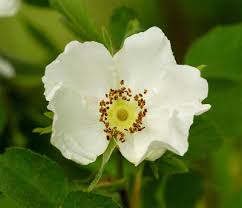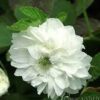Rosa Gallica and Rose Garden Cultivation Techniques: Planting and Care Techniques in Rose Gardens

Rosa Gallica, renowned for its exquisite beauty and historical significance, thrives in well-maintained rose gardens where specific planting and care techniques are employed to ensure optimal growth and blooming. Let’s explore the various techniques utilized in cultivating and caring for Rosa Gallica within rose gardens.
#### 1. **Site Selection and Preparation:**
Selecting the right site is paramount for successful rose cultivation. Choose a location with well-drained soil and at least six hours of direct sunlight daily. Prepare the planting area by loosening the soil to a depth of 12-18 inches and incorporating organic matter, such as compost or aged manure, to improve soil structure and fertility.
#### 2. **Planting Techniques:**
When planting Rosa Gallica, follow these steps for optimal establishment:
– Dig a hole twice as wide and deep as the root ball.
– Amend the backfill soil with compost and a balanced fertilizer.
– Place the rose plant in the center of the hole, ensuring the graft union is above the soil level.
– Backfill the hole with soil, firming it gently around the roots.
– Water thoroughly to settle the soil and eliminate air pockets.
#### 3. **Watering and Irrigation:**
Proper watering is essential for Rosa Gallica’s health and vigor. Provide deep, infrequent waterings to encourage deep root growth and reduce the risk of disease. Water the plants at the base to prevent wetting the foliage, which can lead to fungal infections. Consider installing a drip irrigation system or soaker hoses to deliver water directly to the root zone while conserving moisture.
#### 4. **Fertilization and Soil Management:**
Maintaining soil fertility is crucial for robust rose growth. Apply a balanced fertilizer formulated for roses in early spring, just as new growth begins. Repeat applications every 4-6 weeks throughout the growing season, following package instructions for dosage and frequency. Monitor soil pH and adjust as needed to maintain a slightly acidic to neutral pH range (6.0-7.0).
#### 5. **Pruning and Training:**
Regular pruning and training help shape Rosa Gallica plants, promote flowering, and maintain plant health. Prune in late winter or early spring before new growth emerges, removing dead, diseased, or crossing branches. Use sharp, clean pruners and make angled cuts just above outward-facing buds. Train climbing varieties by tying new shoots to supports and removing any wayward growth.
#### 6. **Pest and Disease Management:**
Preventative measures are key to managing pests and diseases in rose gardens. Monitor plants regularly for signs of aphids, thrips, spider mites, and fungal infections such as powdery mildew and black spot. Employ cultural practices such as proper spacing, good air circulation, and sanitation to minimize pest and disease pressure. Consider using organic insecticides and fungicides as needed, following label instructions carefully.
#### Conclusion: Cultivating Rosa Gallica in Rose Gardens
In conclusion, the cultivation and care of Rosa Gallica in rose gardens require attention to detail and adherence to specific techniques. By selecting an appropriate site, employing proper planting methods, providing adequate water and nutrients, practicing regular pruning and pest management, gardeners can ensure the health and beauty of Rosa Gallica plants. With proper care, Rosa Gallica will grace the garden with its timeless elegance and fragrant blooms for generations to come.
### Part 2: Rosa Gallica and Rose Garden Cultivation Techniques: Planting and Care Techniques in Rose Gardens
In continuation of our exploration of Rosa Gallica and its cultivation in rose gardens, let’s delve further into advanced planting and care techniques that contribute to the health and vibrancy of these iconic flowers.
#### 7. **Mulching:**
Mulching is a beneficial practice in rose gardens as it helps conserve soil moisture, suppress weeds, and moderate soil temperature. Apply a 2-3 inch layer of organic mulch, such as shredded bark or compost, around the base of Rosa Gallica plants, taking care to leave a small gap between the mulch and the stems to prevent rot.
#### 8. **Deadheading and Flower Care:**
Regular deadheading, or the removal of spent blooms, encourages continuous flowering and prevents the development of rose hips, which divert energy away from new growth. Deadhead Rosa Gallica blooms as they fade, cutting the stem just above a healthy leaf node or outward-facing bud. Additionally, remove any damaged or diseased foliage to maintain plant health.
#### 9. **Winter Protection:**
In regions with cold winters, Rosa Gallica may benefit from additional protection to survive harsh conditions. After the first frost, mound soil around the base of the plant to insulate the root zone and prevent frost damage. Consider covering the plant with a layer of straw or burlap, or using rose cones or other protective structures to shield the plant from freezing temperatures and drying winds.
#### 10. **Disease-Resistant Varieties:**
Selecting disease-resistant varieties of Rosa Gallica can significantly reduce the need for chemical interventions and simplify plant care. Look for cultivars bred for resistance to common rose diseases such as black spot, powdery mildew, and rust. Disease-resistant roses are often more vigorous and require less maintenance, making them ideal choices for low-maintenance gardens.
#### 11. **Companion Planting:**
Companion planting involves strategically placing compatible plant species near Rosa Gallica to enhance growth, deter pests, and attract beneficial insects. Consider planting aromatic herbs such as lavender, thyme, and sage to repel pests and provide a fragrant backdrop for the roses. Additionally, companion flowers like marigolds and nasturtiums can attract pollinators and beneficial insects while adding color and diversity to the garden.
#### 12. **Integrated Pest Management (IPM):**
Integrated Pest Management combines various eco-friendly strategies to manage pests and minimize the use of chemical pesticides. Implement cultural practices such as crop rotation, sanitation, and habitat manipulation to disrupt pest life cycles and reduce pest populations naturally. Encourage natural predators such as ladybugs, lacewings, and predatory mites to control aphids, spider mites, and other common rose pests.
#### Conclusion: Advanced Techniques for Rose Garden Care
By incorporating advanced planting and care techniques into rose garden management, gardeners can maximize the health, beauty, and longevity of Rosa Gallica and other rose varieties. From mulching and deadheading to winter protection and disease-resistant cultivars, each technique plays a crucial role in creating thriving and sustainable rose gardens. With dedication, knowledge, and a passion for roses, gardeners can create stunning landscapes that showcase the timeless allure of Rosa Gallica for generations to come.


